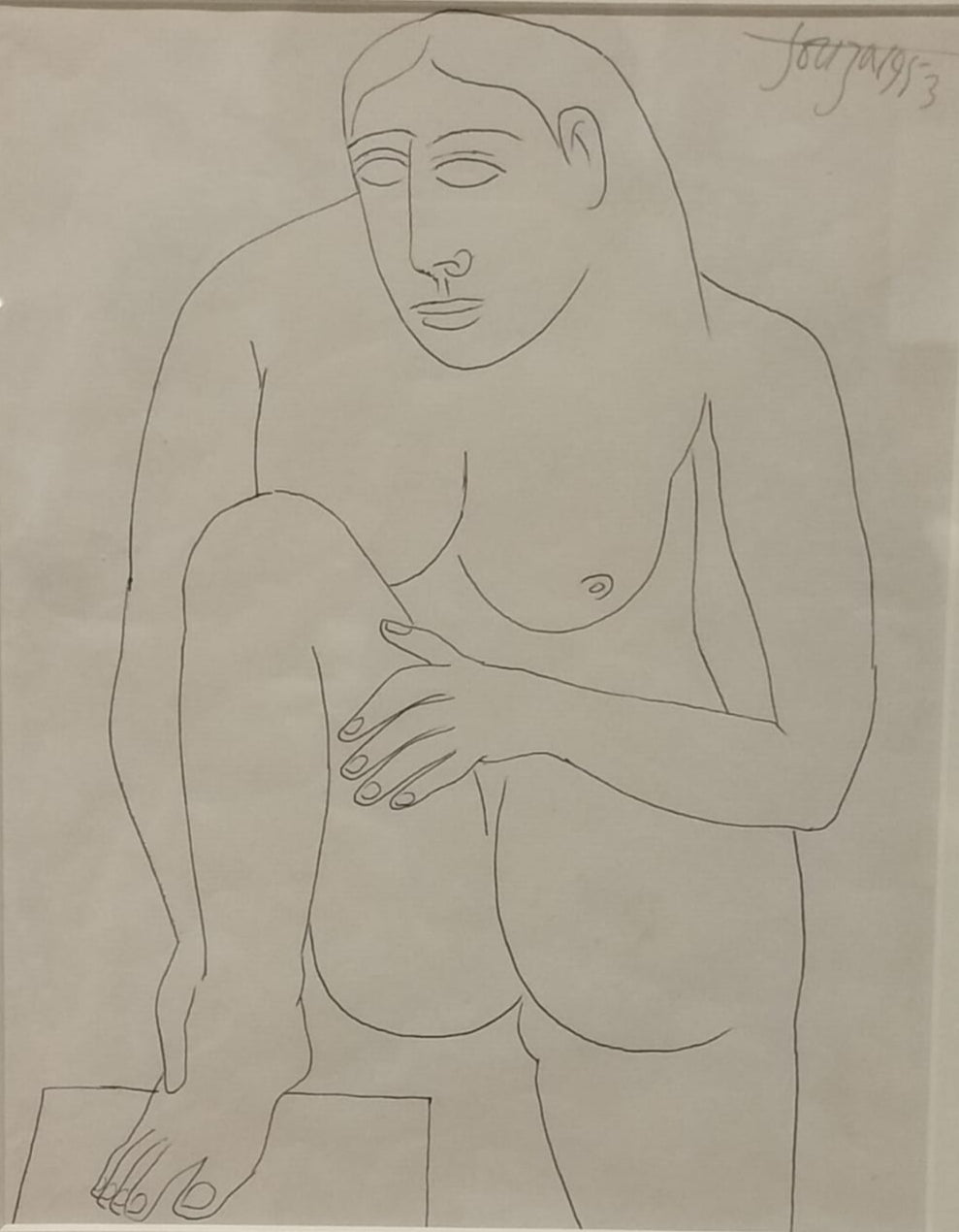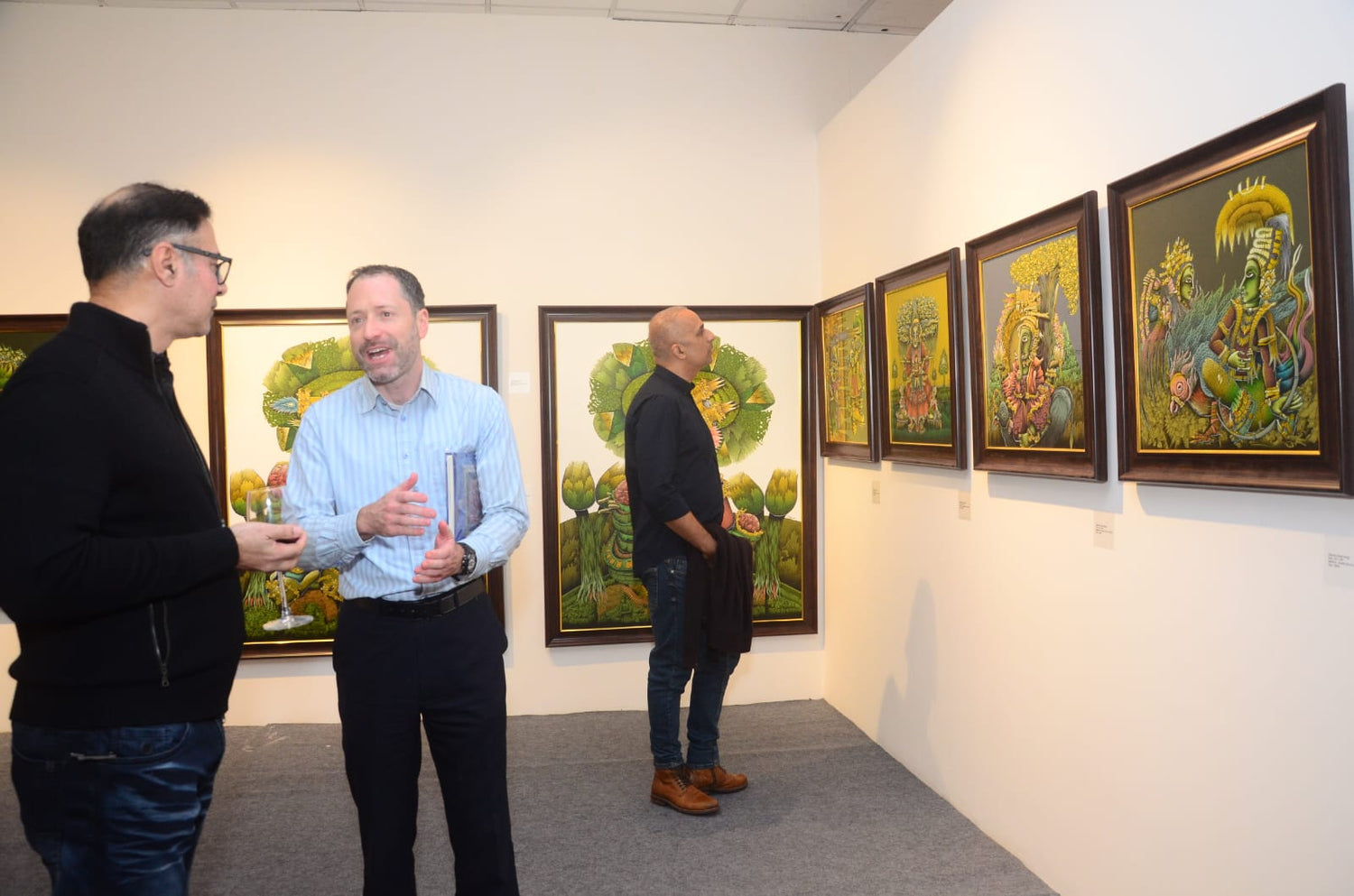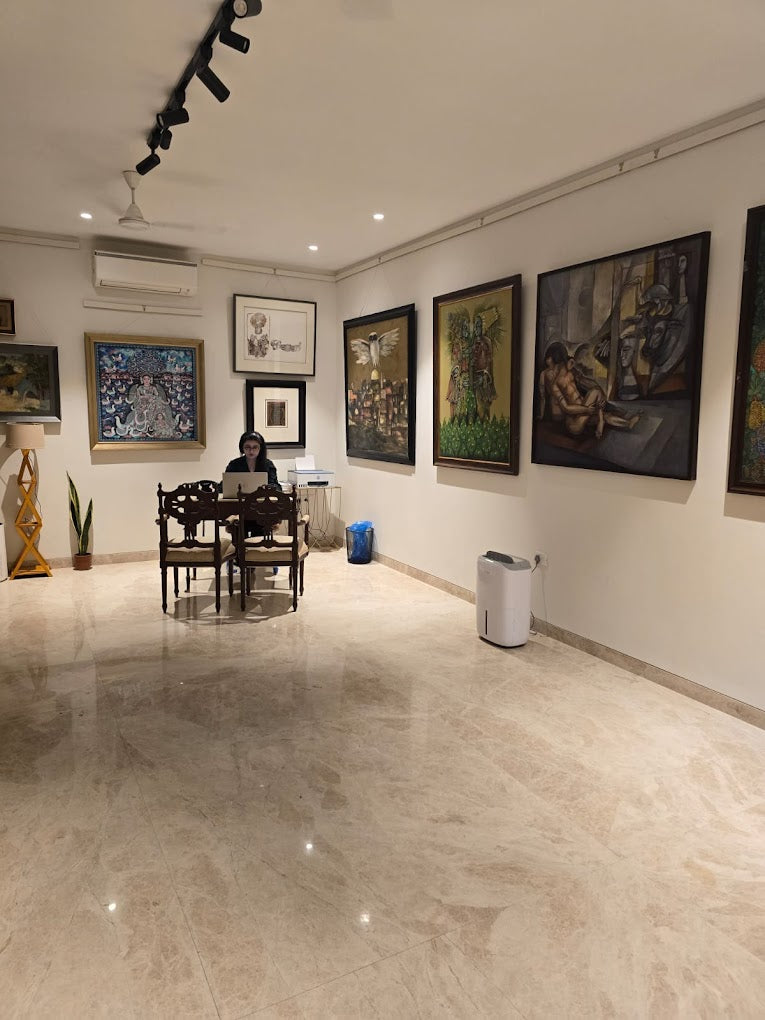Gallery Silver Scpaes
Untitled
Untitled
Couldn't load pickup availability
Artist: F. N. Souza
Medium: Felt Pen on Paper
Size: 20 × 18 inches (50.8 × 45.72 cm)
Year: 1953
This drawing or etching, rendered with a felt pen on paper, presents a striking portrayal of a seated nude female figure by the renowned modernist artist F. N. Souza. Executed in a slightly three-quarter view, the subject is positioned in a relaxed yet structured pose, with one leg bent forward across the other, lending a quiet dynamism to the composition. The lines used to delineate the figure are confident, clean, and measured, showcasing Souza’s ability to distill human anatomy into a stylized yet recognizable form.
Souza’s characteristic approach to figuration is evident here: he eschews photorealistic detail in favor of an expressive clarity that draws attention to contour and proportion. The body is shaped through deliberate, linear strokes that emphasize structural rhythm over embellishment. There is a notable economy of line, each mark is intentional, contributing to the overall form without superfluity. The figure’s anatomy is rendered with a sensitive awareness of weight, posture, and volume, yet remains stylized enough to suggest Souza’s modernist interpretation of the human body rather than a classical ideal.
The facial features are simplified, almost mask-like, with a flattened and emotionless expression that invites psychological distance rather than intimacy. This expressionless quality is enhanced by the lack of detailed musculature or shading, reinforcing a quiet detachment. The eyes are open but vacant, and the mouth is a straight, uninflected line, suggesting introspection or perhaps a sense of resignation. This ambiguity allows viewers to project their own interpretations onto the figure.
The subject’s long, loose strands of hair fall naturally over her shoulders and back, rendered with fluidity and ease. Her seat, a low, rectangular platform, is minimally drawn, grounding her physically within the composition without diverting attention from the figure. The neutral background, devoid of embellishment or narrative context, ensures that the viewer’s focus remains solely on the figure and the interplay of line and form. This minimal inscription does not interfere with the composition but adds a note of authorship and authenticity.
As with many of Souza’s works, this drawing underscores his fascination with the human body, stripped of sentimentality but imbued with formal elegance. It speaks to his ongoing exploration of the nude as a subject of both aesthetic and existential inquiry.


Why Choose Us
Art has always, naturally, reflected the development and exploration of different thoughts and perceptions, and our current postmodern era is no different. It is interesting to see how art has evolved visually, yet the traditional methods of composing art remain a valid means of expression.
All it takes for an artist to rise above normalcy, is inspiration, which fuels his passion to paint beautiful creations throughout his life.
The valuable expression of art is always there with us, but now this expression is yet to take an interesting diversion with our art gallery, Gallery Silver Scapes, located in Hauz Khas Enclave. Art is no longer considered just decorative but has evolved and come forth as a major form of investment yielding high rates of returns for its buyers, making it an expression commonly used.

Mrs Mayor was walked into the art world by the legendary modernist Bimal Das Gupta, one of whose biggest collections remains with Gallery Silver Scapes. In the 1980s, as head and first curator of the Habiart Gallery founded by Mrs Rekha Modi — a childhood friend — Mrs Mayor worked closely with and curated shows for renowned artists such as A Ramachandran, GR Santosh, Rameshwar Broota, Sakti Burman, MK Bardhan, Dhiraj Chaudhury, M Sivanesan, and Arup Das among others.
Besides modern masters, she also worked with young contemporaries such as Sudip Roy, Paresh Maity, Subroto Kundu, Vinod Sharma, and many more. Artworks commissioned by her are now part of prestigious collections, such as those of the India Habitat Centre, Ranbaxy, Pepsi, Hotel Lalit, Bank of America, and many more private and public collections.


